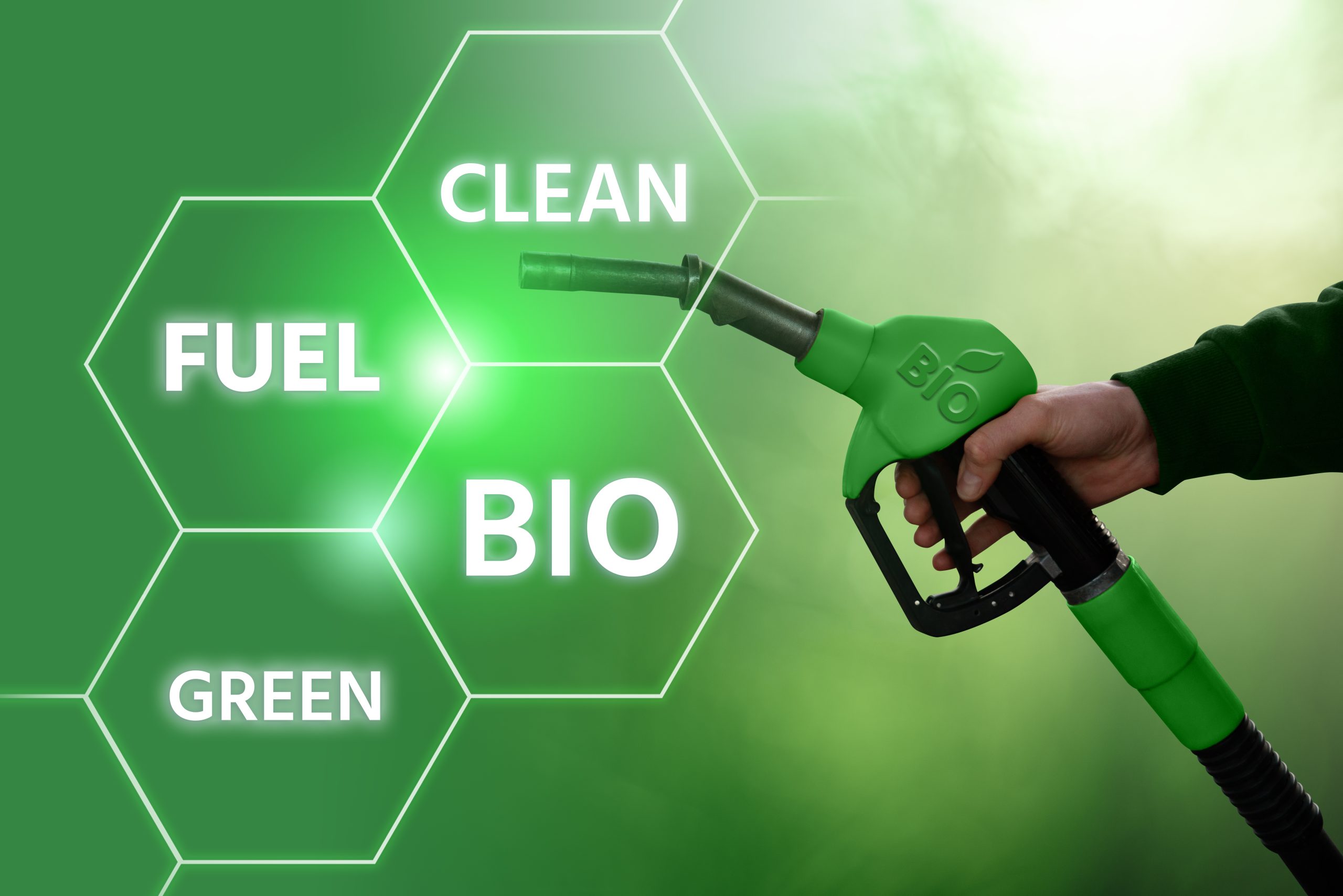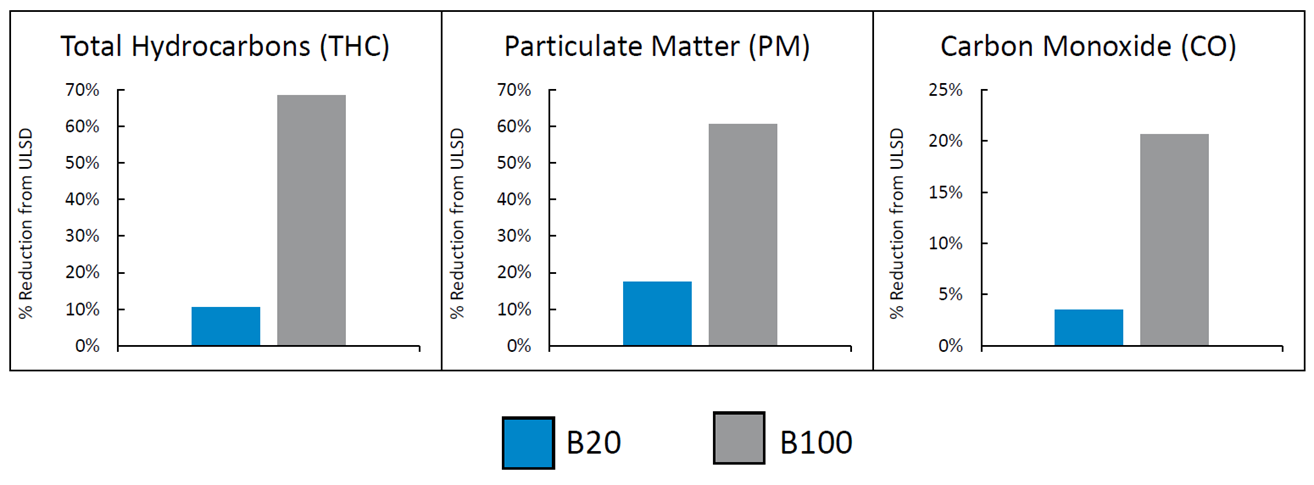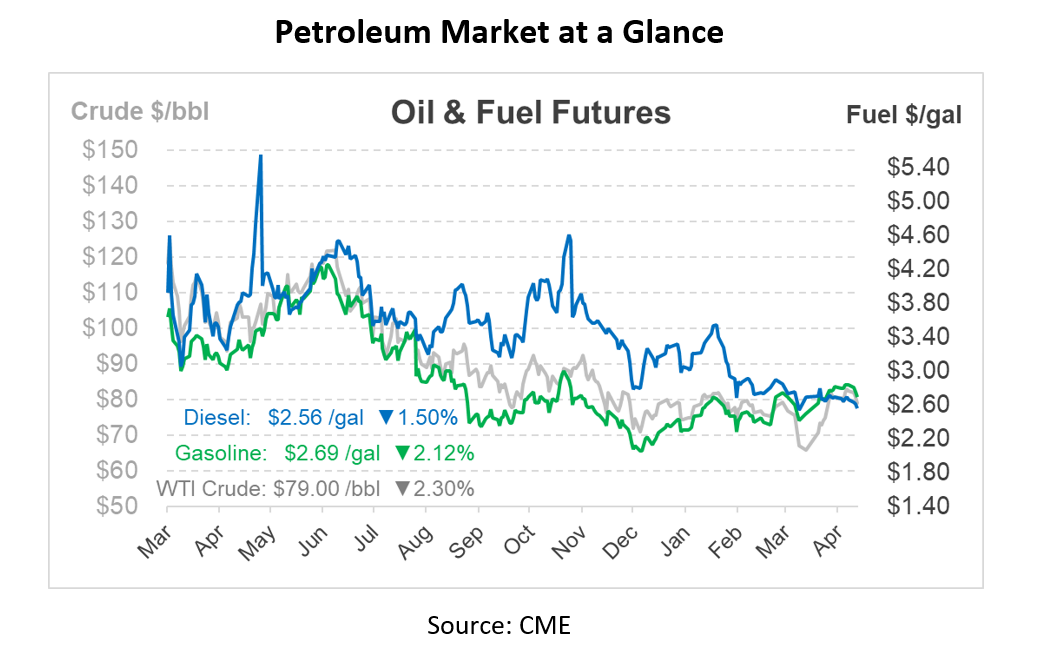
What Is It – Biodiesel
Want to hit your sustainability goals without the expensive capital costs and complex transition logistics? There’s a solution that’s available nationwide and can instantly reduce the carbon intensity of your fleet. That’s right, we’re talking about biodiesel – a product that emits just one-third of the lifecycle emissions of petroleum diesel. Today we’ll be covering what exactly biodiesel is and why you may want to consider the switch yourself in this week’s What Is It article.
What is Biodiesel?
Biodiesel is a renewable fuel made from natural oils like vegetable oil or animal fats, which can be used in diesel engines when blended with petroleum diesel. It is biodegradable, non-toxic, and produces fewer emissions compared to petroleum diesel.
Pure biodiesel is not commonly found in the market as it is typically combined with diesel and identified by the volume of diesel that it contains. In fact, practically all “normal” diesel found at retail gas stations contains some blend of biodiesel up to 5% or B5. That’s because the specification for diesel fuel, ASTM D975, allows anything up to B5 to simply be called diesel. High blends are typically named based on the blend percentage – B10 (10% biodiesel), B20, or B99/B100.
What Are the Benefits?
There are several advantages to utilizing it in your vehicle or fleet. It is produced from renewable sources, which can be replenished more quickly than fossil fuel. It’s also environmentally friendly as biodiesel has lower emissions of air pollutants such as particulate matter, sulfur dioxide, and carbon monoxide compared to petroleum diesel. According to the EPA, biodiesel’s lifecycle emissions are 67% lower than petroleum diesel, largely thanks to the feedstocks absorbing CO2 as they grow.

Biodiesel can also provide increased lubricity, an important factor for modern engines which rely, in part, on fuel to aid in the lubricating process. Blends can more than double the lubricity in the fuel, which can decrease wear and tear and prolong the life of the engine. The product has a higher Cetane number (47) than diesel (40). Higher Cetane equals shorter ignition time and better performance. Lastly, biodiesel is compatible with diesel engines with minimal modifications making it easy and cost-effective to adopt.
Many US states offer tax advantages and usage requirements for biodiesel. Iowa, Minnesota, Texas, New York, and North Dakota are among the states offering incentives for making the switch.
How is it made?
Biodiesel is produced through a process called transesterification, which involves chemically reacting alcohol (such as methanol) with an oil or fat to produce biodiesel and glycerol. The reaction is catalyzed by an alkaline or acid catalyst, and the products are separated by distillation. Below is a general outline of the process:
- The oil or fat is combined with methanol and a catalyst, usually sodium hydroxide or potassium hydroxide.
- The mixture is heated and stirred to promote the chemical reaction between the oil/fat and methanol.
- The reaction produces biodiesel and glycerol, which separate into two distinct layers.
- The biodiesel is washed to remove any residual methanol and soap that may have been formed during the reaction.
- The final product is a clean, high-quality biodiesel that meets industry standards.
How much biodiesel can I use?
Most trucks are designed to use up to a B20 blend, and most engine manufacturers will allow a B20 blend to be used without impacting the engine warranty. You can see a complete list of OEM stances on biodiesel at this link.
What is the availability of biodiesel in the US and Canada?
The availability in North America varies depending on the location. Biodiesel is produced in several US states and Canadian provinces and is widely used as a blended fuel in the transportation sector. According to the National Biodiesel Board, the US produced over 1.9 billion gallons of biodiesel in 2020.
Canada has established renewable fuel standards that require an increasing proportion of renewable fuels to be used in transportation fuel. This has encouraged the growth of the Canadian biodiesel industry and increased the availability of biodiesel across the country.
Unlike petroleum diesel which is shipped on pipelines, biodiesel is distributed around the country by rail. It is commonly available at fuel stations in areas with significant production and usage. Some US states also have renewable fuel standards that require the use of it or other renewable fuels, which can increase the availability in those states. For example, Minnesota mandates the use of B20 diesel during the summer months.

This article is part of Biofuels
Tagged: Biodiesel, Daily Market News & Insights, demand, diesel, sustainability
MARKET CONDITION REPORT - DISCLAIMER
The information contained herein is derived from sources believed to be reliable; however, this information is not guaranteed as to its accuracy or completeness. Furthermore, no responsibility is assumed for use of this material and no express or implied warranties or guarantees are made. This material and any view or comment expressed herein are provided for informational purposes only and should not be construed in any way as an inducement or recommendation to buy or sell products, commodity futures or options contracts.





